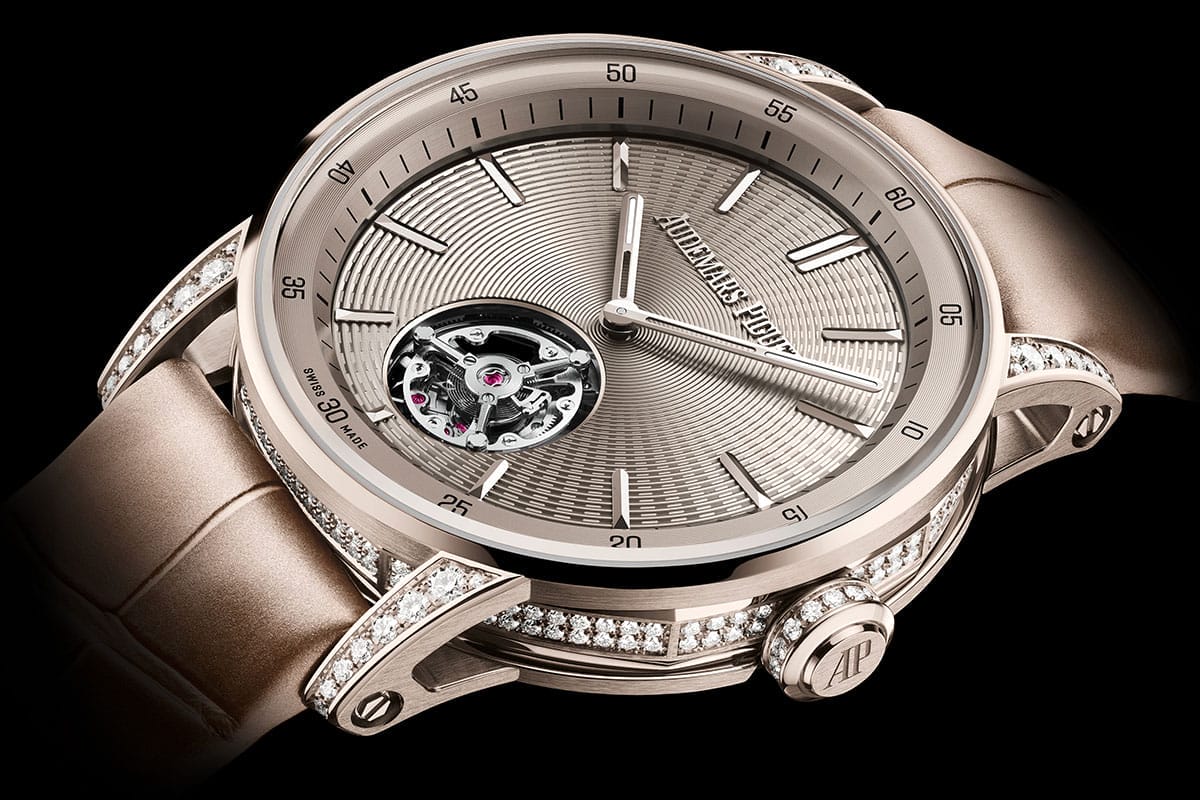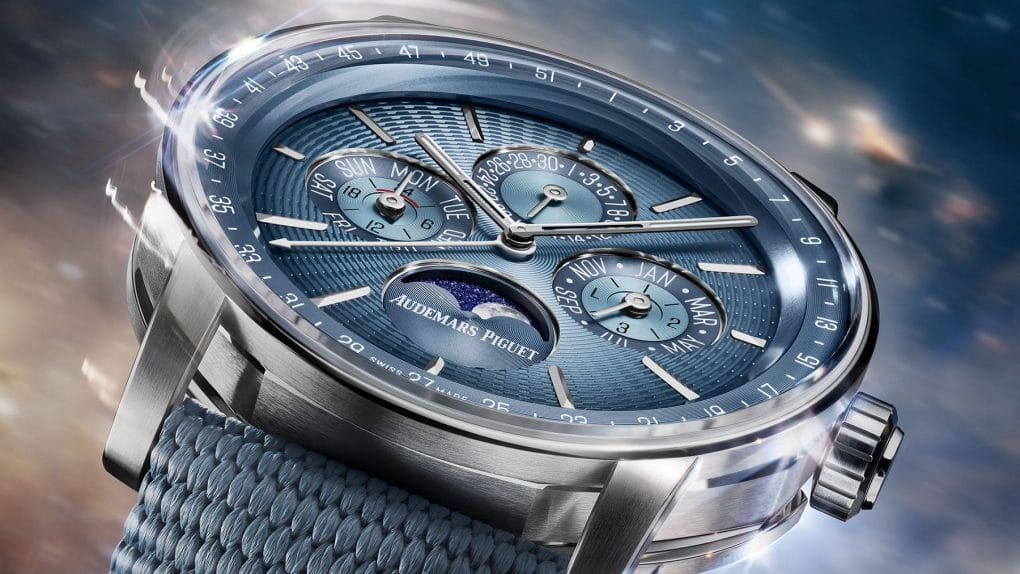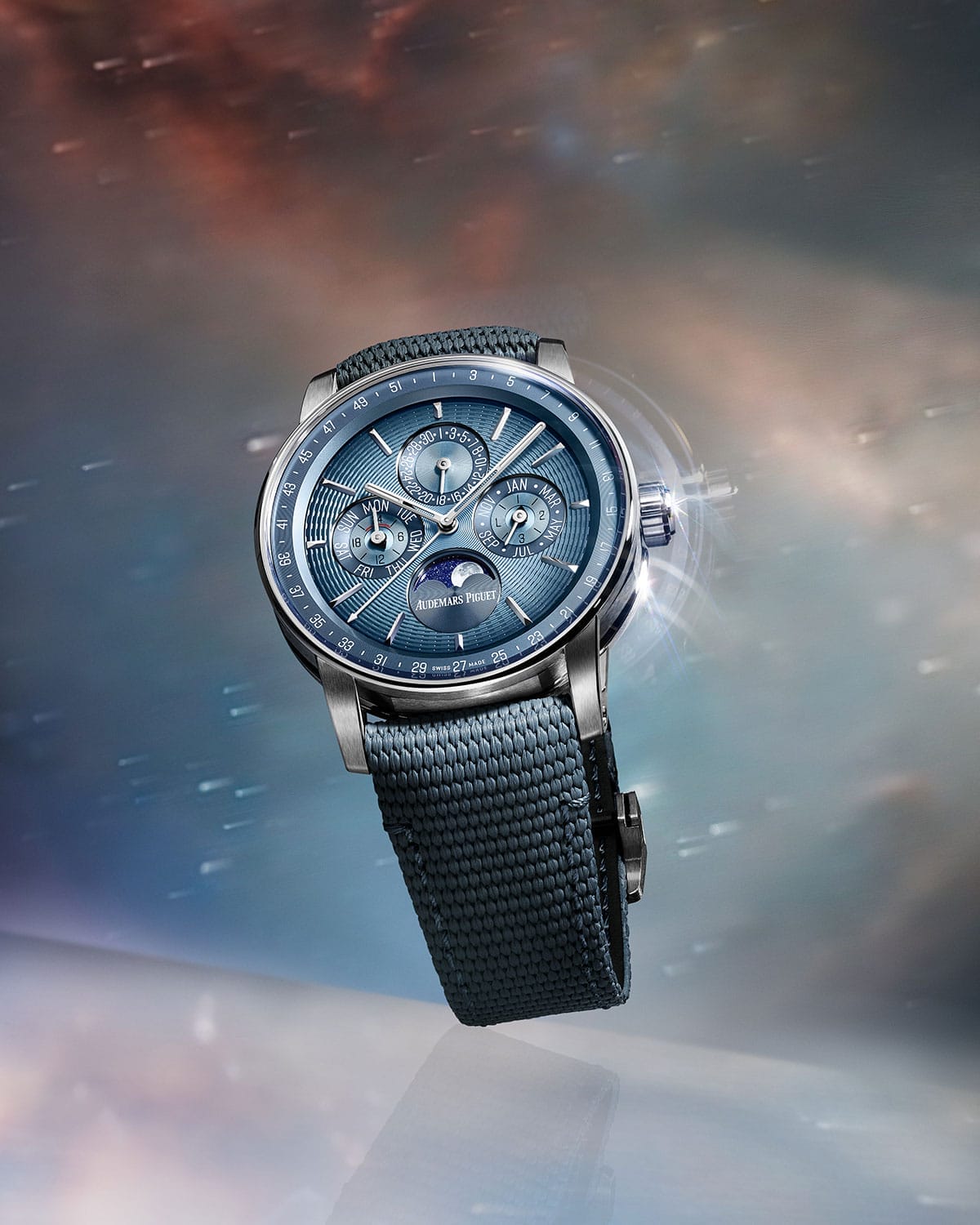Another year, another set of new novelties from Audemars Piguet—and yes, this means there are plenty of new Royal Oaks and derivatives thereof to hit the market. No surprises there. But, as has been the case the past few years, there are some intriguing Code 11:59 releases, too. A collection that was somewhat maligned (to put it lightly) when it was released in 2019, it has since come into its own. This year’s releases are one such example—a softer, more contemporary, more casual counterpoint to the vaunted Royal Oak.

From a technical standpoint, the big news from Audemars Piguet this year is its new perpetual calendar movement, Calibre 7138. Engineered with ergonomics and user-friendliness in mind, all of its functions are controlled solely through the crown. It debuts in a trio of 41mm executions: two Royal Oaks, and one for the Code 11:59. The difference is stark: the Royal Oaks are as weighty and retro-luxe as ever, with their Grande Tapisserie dials and integrated bracelets in steel or sand gold. Meanwhile, the Code 11:59 is the equivalent of a linen shirt, shorts, and flip-flops—expensive, well-tailored, and bespoke ones, mind, but nonetheless more relaxed. It has a light blue gradient dial, which has an embossed concentric ripple pattern that has become a collection signature, paired with a white gold case. The thing that really sets it off is the strap: calfskin on the wrist side for luxury, and rubber-coated with a woven textile pattern on the exterior—dressed-down stylishness at its finest. These are slim watches, too: the Royal Oaks are a mere 9.5mm in depth, while the Code 11:59 is a more laid-back 10.6mm. As a bonus, each of these is available as a 150th anniversary limited edition; they’re nearly identical save for the manufacture’s signature at 6 o’clock on the moonphase subdial, which is, instead, styled as a flowing script inspired by historical documents.
In a similar implementation of casual-but-stylish aesthetics meeting contemporary-but-classical horology is the equally new Code 11:59 Selfwinding Flying Tourbillon 38mm. It is a simple thing in terms of layout—just the two hands and a flying tourbillon at six o’clock. Its mid-sized case is executed in the manufacture’s own gold alloy, called sand gold. This combines the warmth of pink gold with the coolness of white gold, to result in something that seems to bounce between their hues. The PVD dial is colour-matched to the case. At this size, and as a gem-set piece, many would call this a women’s watch—but then, 38mm is very much a unisex contemporary size, and the 235 brilliant-cut diamonds are found only on the lugs, case middle and crown, thus avoiding the limelight of the bezel. This downplays the jewellery aspect and nudges it back towards a more genderless classification.

It is equipped with Calibre 2968, yet another exceptionally slim complicated movement from Audemars Piguet—the watch is only 9.6mm thick—and displays all the hallmarks of a manufacture as historic and accomplished as this. Note, for example, how the titanium tourbillon cage has been tweaked to lie at the same level as the dial, making for a more unified aesthetic. Through the display caseback, one can observe that bridges and plates have been selectively openworked in a geometric pattern, lending a modern touch to a landscape of otherwise traditional horological finery.






